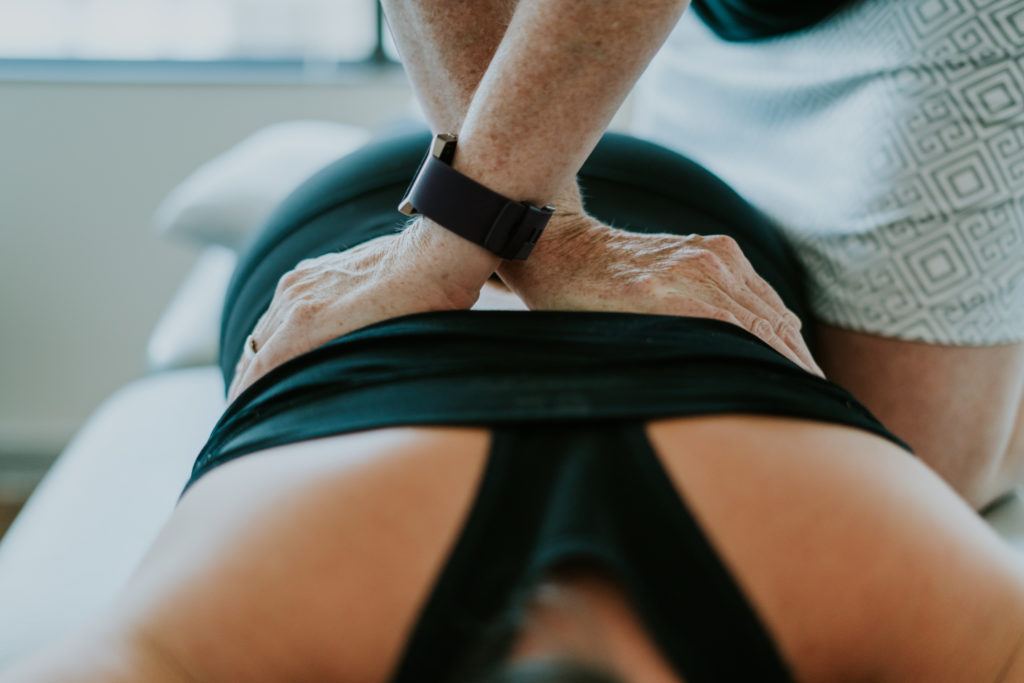Back Pain
Back pain can get better.
Don’t let back pain keep you from living life to its’ fullest!
Back pain is very common. 85% of people will suffer from back pain at some point in their lives. In most cases low back pain can be treated with conservative (nonsurgical) methods. Problems can be avoided by knowing what causes the pain and what to do to prevent it.
HOW YOUR BACK WORKS
Your spine is a complex system of inter locking working pieces. The bones, or vertebrae, are separated by discs and held together by ligaments and supporting muscles.
The basic unit of the spine consists of two vertebrae and a disc. The disc acts as a shock absorber and it supports and distributes the weight of your body. The two small joints (apophyseal or facet joints) guide the movement in your back. Ligaments bind your vertebrae together and give additional strength to the discs and joints of the back. Muscles produce and control movement of your spine. They are an important source of strength and support for your back.
IS MY BACK OUT?
No! Your discs are firmly attached to the vertebrae above and below by ligaments. You cannot slip a disc” or put your back out. A disc may tear (prolapse or rupture) or become thin or bulge with wear and age. Most back pain is caused by joint or muscle problems.
WHAT CAUSES BACK PAIN?
The spine is very complex and many things can go wrong. Injuries can occur to discs, joints and ligaments due to acute trauma, poor postural habits, and the accumulation of physical stress on the spine. Problems can occur as a result of arthritis, degenerating discs, muscle tension and muscle weakness.
WHAT SORT OF PAIN IS FELT?
Pain may be nagging, sharp, uncomfortable or sheer agony. It can last for hours, days or years if uncorrected. Pain may be felt in the back or it may be referred pain. That is, it may be felt in the lower abdomen, groin, leg or foot. Sensations such as pins and needles, numbness, and burning may also be felt.
HOW CAN YOU PREVENT IT?
Adopt good habits:
POSTURE – knees soft, not pushed back. Shoulders relaxed, not hunched up or rolled for wards. Head level with chin tucked in.
Stand tall without tension!!
Posture, should be stable, balanced and relaxed when sitting, walking and standing.
WORK – avoid prolonged sitting or working in the same position. Stretch, change positions, redesign your work area.
LIFTING – keep loads close to the body, feet well apart, bend the knees more than the back, lift with leg power.
CARRYING – hold loads close to your body or strapped to your back.
SLEEPING – your mattress should be firm enough to support your natural shape.
WEIGHT CONTROL – excess weight puts extra strain on your spine.
EXERCISE – keep your spine and trunk muscles flexible and strong with correct back and abdominal muscle exercises. Pilates and Yoga are two low impact forms of exercise that work to balance all the body’s musculo-skeletal facets.
REST BUT NOT TOO MUCH!
If you injure your back, some initial rest is essential to give your spine the chance to recover and repair. Don’t push on regardless. Rest must be followed with a gradual return to activity. Our physiotherapists at Burrard Physiotherapy will guide you through this process. Early return to activity is essential for full recovery, but should be monitored closely by your physiotherapist
IMPORTANT Seek early treatment and advice. It can dramatically reduce your recovery time!
AIMS OF PHYSIOTHERAPY
- Alleviate Pain
- Increase Mobility & Stability
- Lengthen Tightened Muscles
- Retrain Muscles—Strength, Co-ordination & Endurance
- Prevent Re-injury
TREATMENTS YOU MAY RECEIVE
- Spinal Mobilzation or Manipulation
- Soft Tissue Techniques such as massage, frictions, deep tissue release
- Electrotherapy modalities such as Interferential, Laser, Ultrasound or Tens
- Spinal Decompression/Traction
- Exercise prescription; Yoga; Pilates

